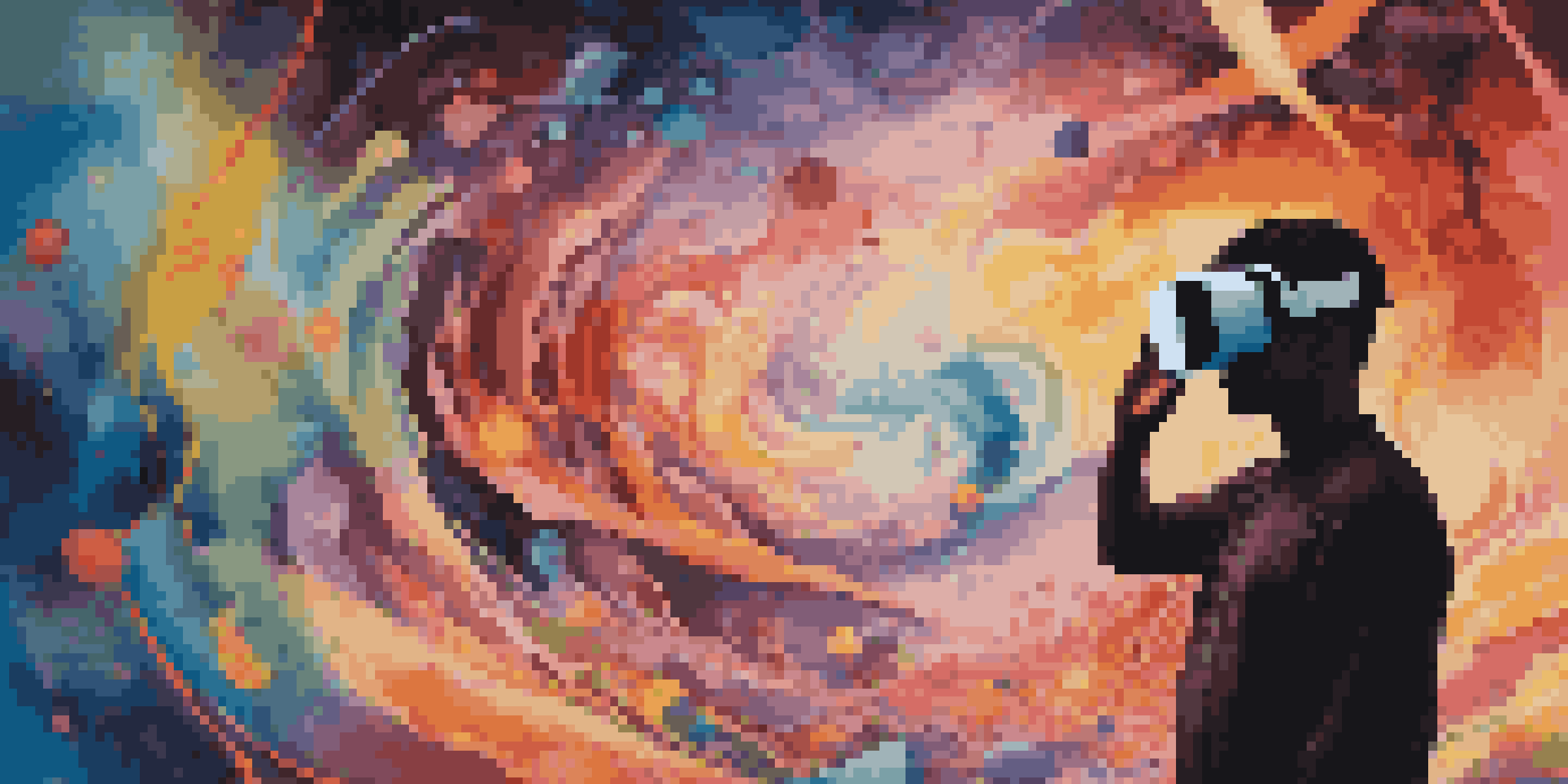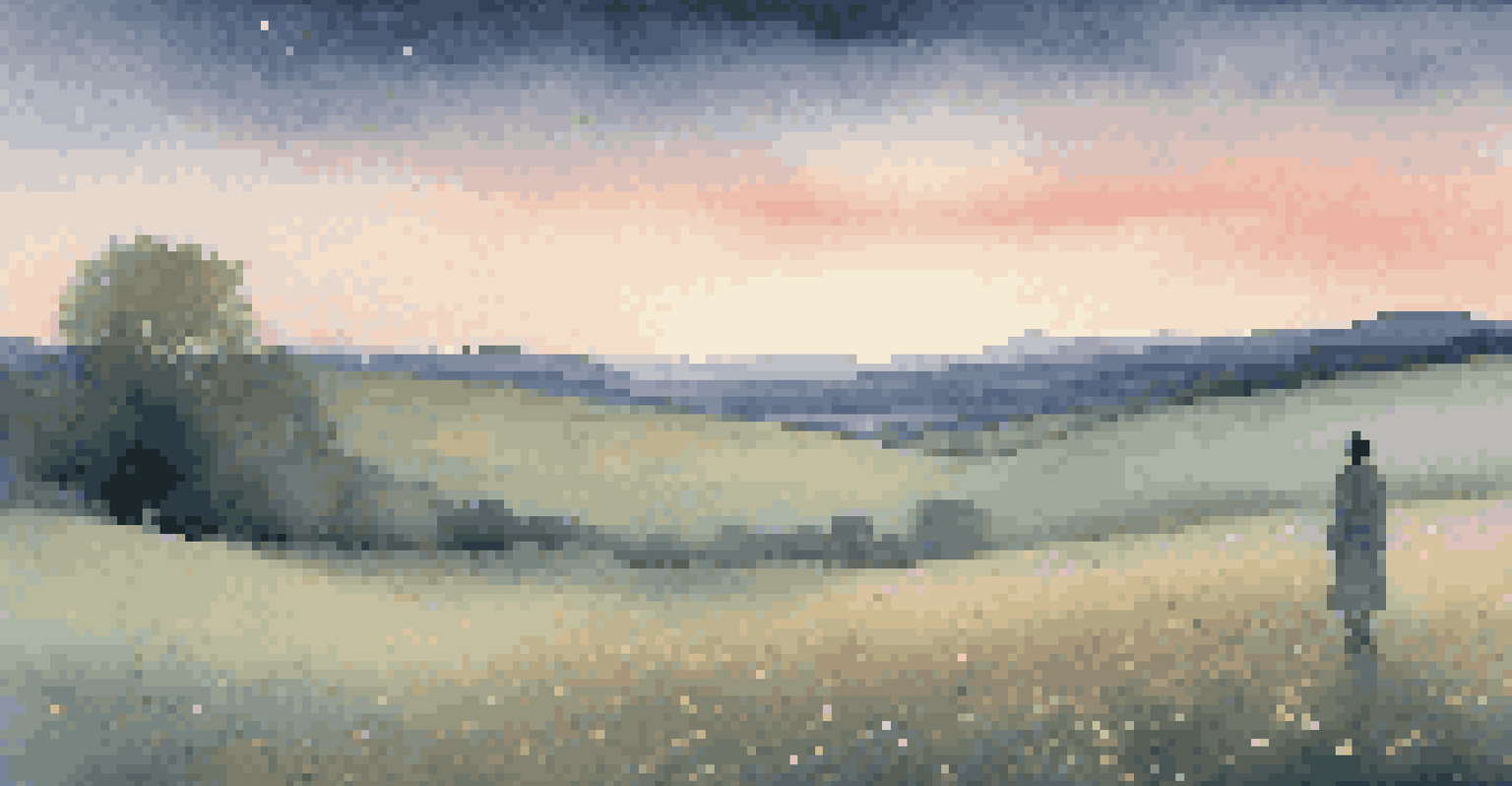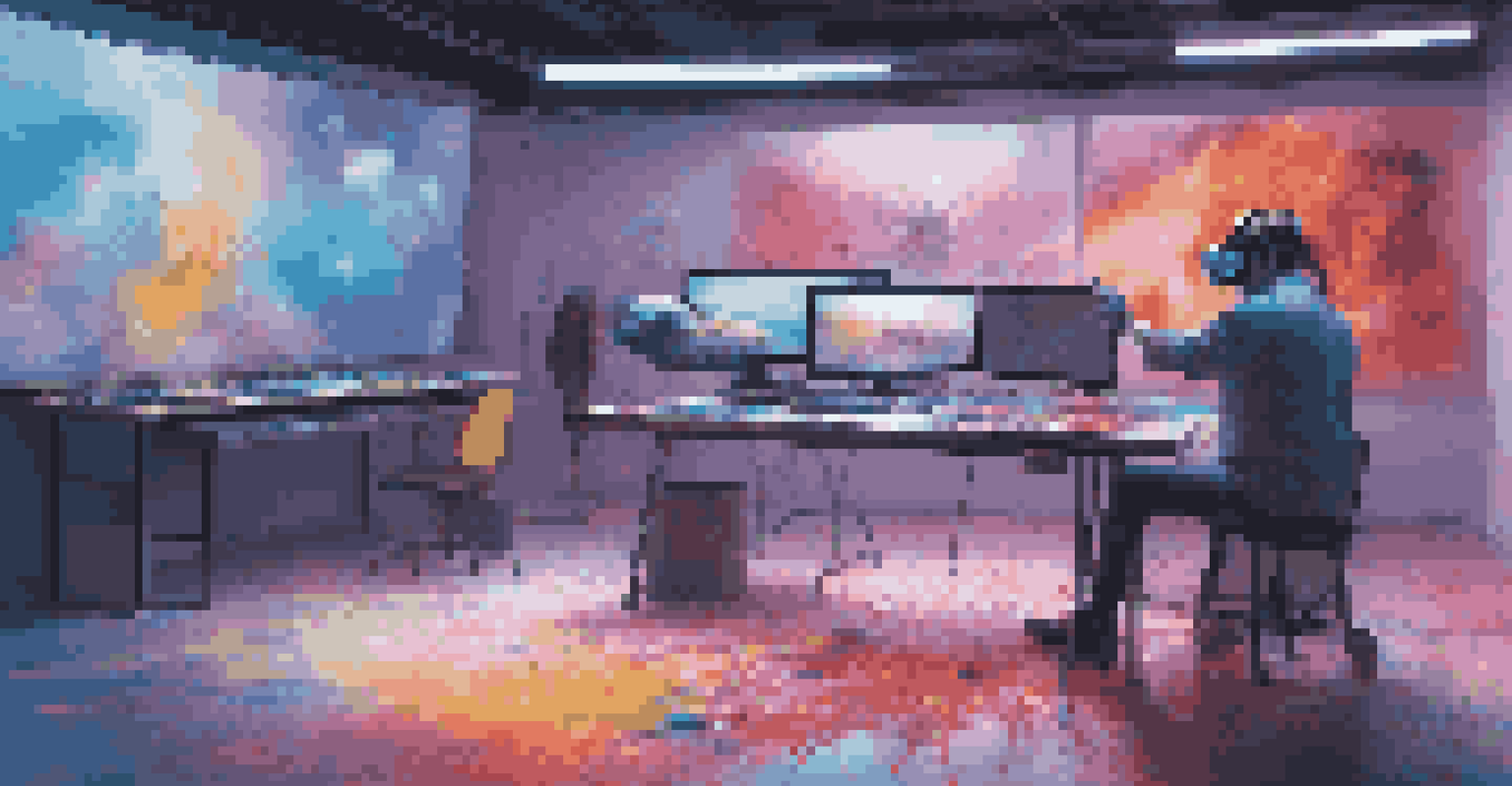Virtual Reality Art and the Transformation of Viewer Perspectives

What is Virtual Reality Art?
Virtual reality art, often abbreviated as VR art, is an innovative form of creativity that immerses viewers in a three-dimensional environment. Unlike traditional art forms, where the viewer gazes from a distance, VR art invites individuals to step inside the artwork itself. This immersive experience creates a unique interaction, allowing audiences to explore the art as they would a physical space.
Virtual reality is a new medium, and like all new mediums, it provides a new way for artists to express themselves.
Imagine walking through a painting instead of merely observing it on a wall. In a VR art installation, you can touch, move, and even manipulate elements of the piece, making the viewer an active participant rather than a passive observer. This shift in perspective not only enhances engagement but also deepens emotional connections with the art.
As technology advances, more artists are embracing VR to push the boundaries of creativity. With tools that enable the creation of vast, intricate worlds, VR art challenges our conventional understanding of what art can be, transforming it into an experience that is as much about exploration as it is about appreciation.
The Evolution of Viewer Interaction
Historically, art appreciation relied heavily on physical presence and visual observation. However, with the advent of virtual reality, this dynamic is rapidly evolving. Viewers no longer just look at art; they become part of it, experiencing works in new and dynamic ways that were previously unimaginable.

For instance, consider a VR art piece where viewers can alter the colors and shapes around them. This level of interactivity not only personalizes the experience but also empowers the viewer to contribute creatively, blending the lines between artist and audience. Such interactions foster a sense of ownership and connection that traditional mediums often lack.
Moreover, VR art opens doors to accessibility, allowing individuals from diverse backgrounds to experience art in ways that resonate with them. Whether through a headset in a gallery or via a VR platform at home, the ability to engage interactively makes art more inclusive and approachable than ever before.
Emotional Engagement Through Immersion
One of the most compelling aspects of virtual reality art is its capacity to evoke emotional responses. The immersive nature of VR creates a sense of presence that can stir feelings and provoke thoughts in a way that traditional art might not. When you step into a virtual world, the sights and sounds envelop you, making it easier to connect with the themes and emotions presented.
Art is not a thing; it is a way. It is a way of seeing and a way of being, and virtual reality expands that possibility exponentially.
For example, a VR art piece exploring loneliness might simulate a vast, empty landscape where viewers can feel the isolation surrounding them. This emotional depth transforms the experience, allowing viewers to empathize with the subject matter on a personal level. Such powerful narratives can leave a lasting impact, prompting reflection long after the experience ends.
By facilitating this emotional connection, VR art not only entertains but also encourages introspection and dialogue. It invites viewers to confront complex issues, fostering a deeper understanding of the human experience through the lens of creativity.
Breaking Down Physical Barriers
Virtual reality art has the remarkable ability to transcend physical limitations. Traditional galleries often restrict access based on location, resources, or even physical mobility. However, VR art can be experienced from anywhere, allowing a wider audience to engage with creative expressions that might otherwise remain out of reach.
Imagine someone living in a remote area who dreams of visiting famous art galleries. With VR, they can explore these spaces and experience curated collections from the comfort of their home. This democratization of access fosters a global appreciation for art and culture, connecting people regardless of their geographical constraints.
Additionally, VR installations can be designed to accommodate various needs, making art more inclusive for individuals with disabilities. By breaking down these barriers, virtual reality not only changes how we view art but also who gets to experience it, promoting diversity and inclusivity in the art world.
The Role of Technology in VR Art Creation
The creation of virtual reality art is a fascinating blend of technology and creativity. Artists use specialized software and hardware to craft immersive environments that can range from the fantastical to the deeply personal. This intersection of art and technology allows for innovative storytelling techniques that push the boundaries of traditional media.
For instance, artists can leverage tools like 3D modeling, animation, and spatial sound design to create multi-sensory experiences. These technologies enable the construction of narratives that unfold in real-time, allowing viewers to navigate through the story at their own pace. This interactive storytelling is a game-changer for artists seeking to engage audiences more deeply.
As technology continues to evolve, so too will the possibilities for VR art creation. Artists will have access to even more sophisticated tools, enabling them to craft experiences that are richer and more immersive than ever before, ultimately transforming viewer engagement.
Challenges Facing VR Art and Artists
Despite its many advantages, virtual reality art is not without its challenges. For one, the technology required to create and experience VR art can be expensive and inaccessible to many artists and audiences. This can limit the diversity of voices and perspectives represented in the medium, creating a potential echo chamber of ideas.
Furthermore, the rapid pace of technological advancement means artists must continually adapt to new tools and platforms. This can be daunting, as what is cutting-edge today may be outdated tomorrow. Artists may find themselves in a constant cycle of learning and relearning, which can be both exciting and exhausting.
Additionally, there are questions about the longevity and preservation of VR art. Unlike traditional art forms, which can be physically stored and displayed, VR experiences are often tied to specific technologies that may not be around forever. As the art world continues to embrace VR, finding solutions to these challenges will be crucial to ensuring its growth and sustainability.
The Future of Virtual Reality Art
As we look to the future, the potential for virtual reality art is both exciting and expansive. With ongoing advancements in technology, we can expect even more innovative methods for artists to create immersive experiences that resonate with viewers. This evolution will likely lead to new genres and forms of expression we can't yet imagine.
Moreover, as VR becomes increasingly mainstream, we will likely see a greater integration of this medium into educational and social contexts. Schools may utilize VR art to teach creativity and critical thinking, while museums could offer immersive exhibitions that redefine how we engage with history and culture.

Ultimately, the future of virtual reality art promises a richer, more inclusive tapestry of human expression. By continuing to explore and innovate, artists can harness the power of this medium to connect with audiences in profound ways, transforming not only the art world but also the very way we experience creativity.